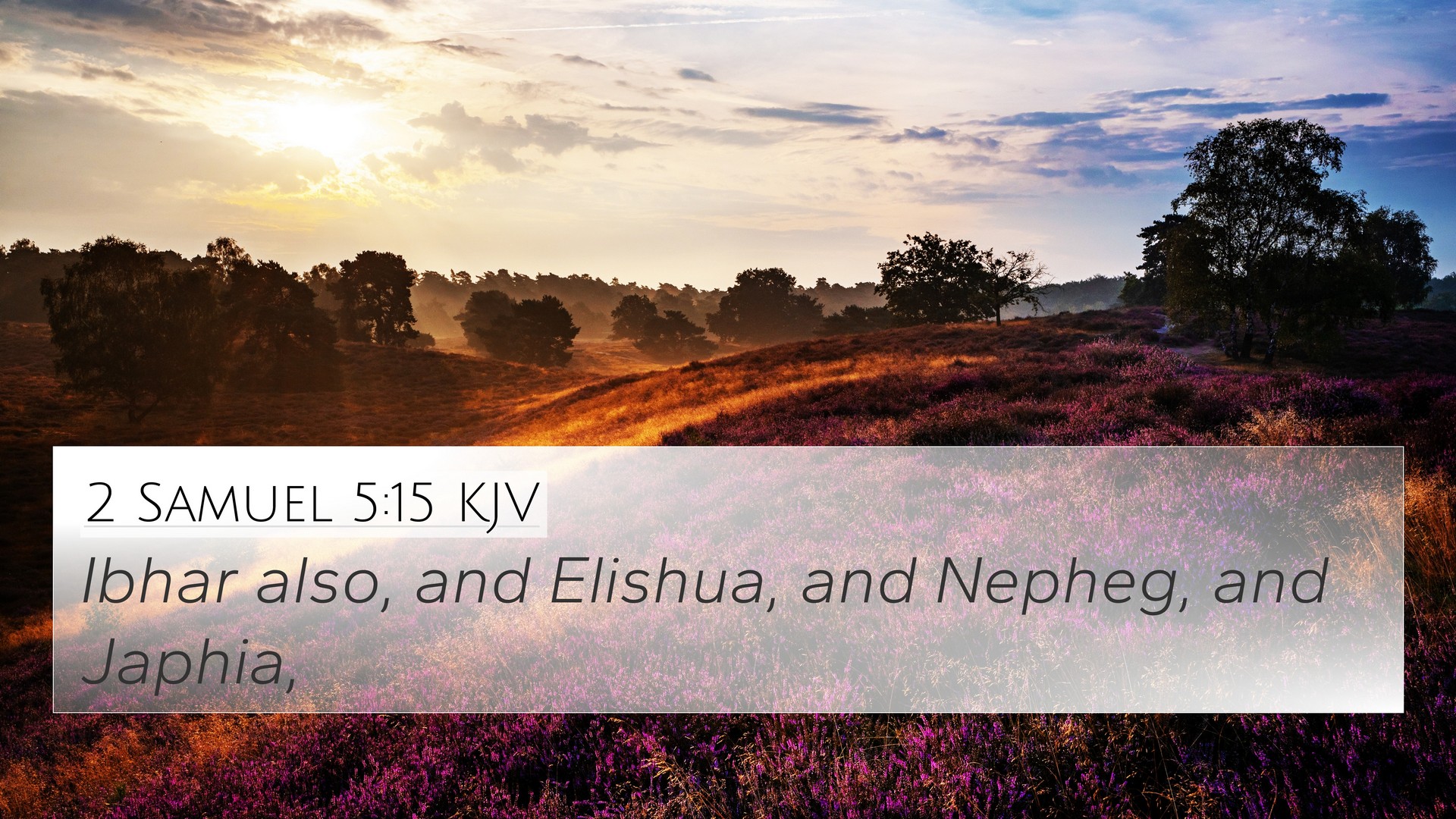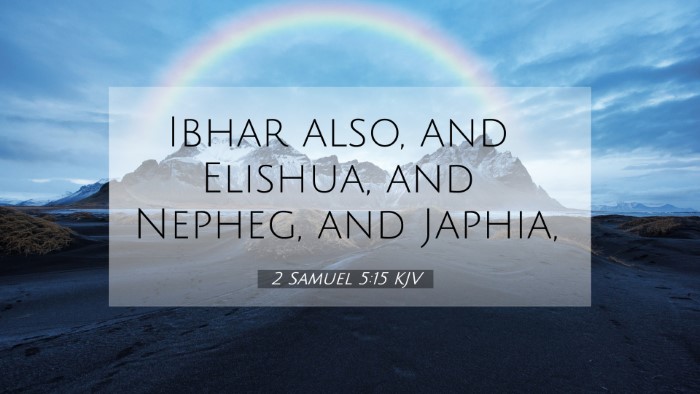Understanding 2 Samuel 5:15
Bible Verse: 2 Samuel 5:15
This verse states: "The Philistines came up yet again, and spread themselves in the valley of Rephaim."
Summary of Meaning
2 Samuel 5:15 captures a critical moment in the narrative of King David's battle against the Philistines. The verse identifies the renewed threat of the Philistines, who have gathered in the valley of Rephaim, illustrating their persistent opposition to Israel and David’s reign. This characteristic echo of conflict and the relentless pursuit of adversaries serves to highlight the themes of resilience and divine support throughout David's kingship. The insights gathered from various public domain commentaries provide a deeper understanding of the implications and connections of this verse within the broader biblical context.
Commentary Insights
-
Matthew Henry:
Henry emphasizes that the Philistines' return symbolizes their unyielding hostility toward Israel. This hostility seems to serve as a backdrop for David's reliance on God for strength and guidance. Henry notes that the recurrence of conflict ultimately allows for the demonstration of God's power and providence over David's enemies.
-
Albert Barnes:
Barnes comments on the tactical significance of the valley of Rephaim, known for battles in Israel's history. He suggests that the geographical context contributes to the narrative's intensity, indicating that God’s hand was present in these developments. Barnes underscores the importance of divine support in overcoming the external threats posed by the Philistines.
-
Adam Clarke:
Clarke reflects on the cyclical nature of Israel's conflicts and the Philistine invasions, viewing these confrontations as opportunities for exhibiting God’s sovereignty and David's leadership. Clarke additionally notes David's spiritual preparedness, which serves as a crucial factor in asserting Israel’s strength against its foes.
Thematic Connections
The themes present in 2 Samuel 5:15 resonate with several other scriptural passages that deal with conflict, leadership, and divine guidance. Below are some vital cross-references that deepen our understanding of the interconnectedness of scripture:
- 1 Samuel 17:47: This verse mentions the battle between David and Goliath, showcasing David's faith and reliance on God before facing a formidable enemy.
- Psalm 18:39: David cites God's empowerment in battle, illustrating God as the source of strength against adversaries.
- Isaiah 54:17: This promise conveys that no weapon formed against God’s people will prosper, reflecting the assurance of divine protection in spiritual warfare.
- Ephesians 6:12: This New Testament insight speaks to the nature of spiritual warfare, linking the physical battles of the Old Testament to the spiritual battles faced by believers today.
- Hebrews 11:32-34: The hall of faith and the mention of those who conquered kingdoms through faith finds resonance with David's victories over the Philistines.
- Philippians 4:13: Paul's declaration of strength through Christ relates to the empowerment that David received in his confrontations.
- 2 Corinthians 10:4: This verse speaks to the nature of spiritual weapons, akin to David’s reliance on God’s strength in facing the Philistine threat.
Scriptural Cross-Referencing
Using tools for Bible cross-referencing can illuminate the connections between these verses. By employing a Bible concordance or a cross-reference Bible study guide, readers can uncover additional thematic parallels and enhance their understanding. Here’s how to engage in effective cross-referencing:
- Utilize a comprehensive Bible cross-reference system to trace themes and events throughout the Bible.
- Examine cross-referencing methods to identify connections between the Old and New Testament.
- Consider Bible chain references for thematic studies grounded in specific contexts.
Conclusion
2 Samuel 5:15 serves as a reminder of the ongoing battles faced by God’s people, echoed in the New Testament. The interplay between human effort and divine support is pivotal, establishing a foundation for understanding how scripture interacts and informs our faith. By exploring these connections and employing cross-referencing tools, readers can engage with the Bible in a deeper, more meaningful way.




